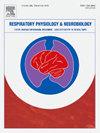运动中呼吸困难的多维评估:当前的方法和建议。
IF 1.6
4区 医学
Q3 PHYSIOLOGY
引用次数: 0
摘要
呼吸困难是一种复杂的、多方面的呼吸不适症状,严重影响生活质量和临床预后。虽然传统的评估主要集中在呼吸困难的感觉强度,但这种方法没有考虑情感和/或定性方面。越来越多的证据强调需要多维评估方法,以提供对呼吸困难的更全面的了解,特别是在运动的背景下。心肺运动试验(CPET)提供了一种标准化的生理刺激来实时评估呼吸困难反应,为其潜在机制和治疗干预反应提供了有价值的见解。规范的参考方程可以帮助识别CPET期间异常高的呼吸强度。本文综述了目前用于运动过程中多维度呼吸困难评估的方法,包括单项评定量表、多维工具、描述符列表和症状限制位点。我们还讨论了在CPET期间将呼吸困难与生理反应联系起来的最佳实践,以加强对机制的理解,为有针对性的干预提供信息,并评估干预效果。标准化的评估方法和确保透明的报告是迈向提高临床和研究效用的劳力性呼吸困难评估的关键步骤。本文章由计算机程序翻译,如有差异,请以英文原文为准。
Multidimensional assessment of breathlessness during exercise: current methods and recommendations
Dyspnea, or breathlessness, is a complex, multidimensional symptom of breathing discomfort, which significantly impacts quality of life and clinical prognosis. While traditional assessments have primarily focused on breathlessness sensory intensity, this approach does not consider affective and/or qualitative dimensions. Growing evidence highlights the need for multidimensional assessment approaches that provide a more comprehensive understanding of breathlessness, particularly in the context of exercise. Cardiopulmonary exercise testing (CPET) provides a standardized physiological stimulus to assess breathlessness responses in real-time, offering valuable insights into its underlying mechanisms and response to therapeutic intervention. Normative reference equations can help identify abnormally high breathlessness intensity during CPET. This review examines current methodologies for multidimensional breathlessness assessment during exercise, including single-item rating scales, multidimensional tools, descriptor lists, and locus of symptom limitation. We also discuss best practices for linking breathlessness with physiological responses during CPET to enhance mechanistic understanding, inform targeted interventions, and evaluate interventional efficacy. Standardizing assessment approaches and ensuring transparent reporting are critical steps toward improving the clinical and research utility of exertional breathlessness assessments.
求助全文
通过发布文献求助,成功后即可免费获取论文全文。
去求助
来源期刊
CiteScore
4.80
自引率
8.70%
发文量
104
审稿时长
54 days
期刊介绍:
Respiratory Physiology & Neurobiology (RESPNB) publishes original articles and invited reviews concerning physiology and pathophysiology of respiration in its broadest sense.
Although a special focus is on topics in neurobiology, high quality papers in respiratory molecular and cellular biology are also welcome, as are high-quality papers in traditional areas, such as:
-Mechanics of breathing-
Gas exchange and acid-base balance-
Respiration at rest and exercise-
Respiration in unusual conditions, like high or low pressure or changes of temperature, low ambient oxygen-
Embryonic and adult respiration-
Comparative respiratory physiology.
Papers on clinical aspects, original methods, as well as theoretical papers are also considered as long as they foster the understanding of respiratory physiology and pathophysiology.

 求助内容:
求助内容: 应助结果提醒方式:
应助结果提醒方式:


